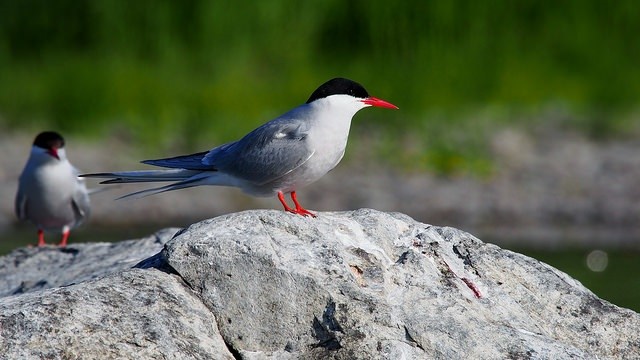
A biologist recently returned from a survey of seabirds on Kodiak Island, and she said some colony numbers have decreased this summer.
Terns are having a difficult year, said Robin Corcoran, a bird biologist for Kodiak National Wildlife Refuge. Three colonies are on the road system: at the Pasagashak River, the head of Kalsin Bay, and the head of Middle Bay.
“Two of those colonies, Pasagshak River and Kalsin, have already failed,” she said. “Both Arctic and Aleutian terns that were nesting at those locations abandoned and we believe it was due to a combination of predation by a variety of predators. We caught a lot of different predators at the nest cameras. But it was also bad weather.”
Some of the terns have been noncommittal and aren’t nesting yet, she said.
When they do breed, she said crows, red foxes, magpies and brown bears are some of the predators that snack on their eggs.
And when it comes for them to hatch, timing is key for survival.
Birds that are at least couple of weeks old have a better chance of surviving bad weather, she said.
“A cold, stormy spring can be difficult because of the storms, but ocean conditions are typically better for forage fish, so if you are lucky enough to hatch in a stretch of weather that’s good, there’s plenty of food around, those conditions are very good for seabirds.”
Corcoran said that’s opposed to the past two summers, when warmer temperatures hurt the number of forage fish available to the seabirds.
Like the terns, there are also fewer puffins and cormorants, Corcoran said. It’s hard to tell in different cases if predators or weather had more of an effect.
She says refuge staff will take another look later in the summer to see if the trend has changed.
“The birds might be delaying nesting, so we’re gonna go back in August to see if we have more activity then, and we can get productivity information in August too.”
Meanwhile, land birds could be looking forward to a good year, she said, and August surveys may give staff a better idea.
